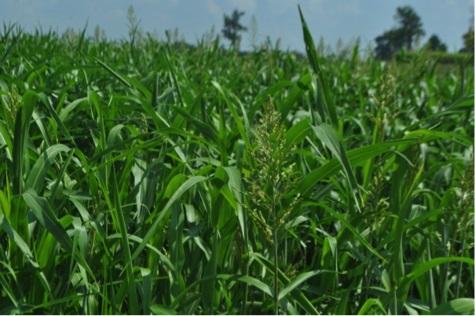Animal Management Tip: Warning for Prussic Acid or Cyanide Poisoning

Prussic acid poisoning occurs when livestock graze certain plants that contain cyanide-producing compounds. Such species include, but are not limited to, sorghum, sudangrass, sorghum-sudan hybrids, Johnsongrass, and wild cherry. Cyanide can interfere with oxygen utilization in livestock, especially if consumed in large amounts. Symptoms appear quickly after consumption and may include cherry red colored blood, staggering, labored breathing, spasms, foaming at the mouth, falling, thrashing, severe convulsions, and death. If an animal has these symptoms, seek immediate treatment by a veterinarian.
Several management tools exist to reduce the risk of prussic acid poisoning. Before turning livestock into fields with forages that are known to produce prussic acid, contact your local county extension agent to test your forages. Wait to turn out animals once possible risk forages reach 15 inches tall. Do not graze wilted plants or plants with young tillers. Do not graze for 2 weeks after a non-killing frost. For a killing frost, wait at least 48 hours or until the material is dry before grazing. Avoid applying high levels of nitrogen. Cut high risk forages for hay, as prussic acid content decreases significantly during the curing process. For silage, prussic acid escapes as a gas during fermentation but it is still advised to delay feeding silage for six to eight weeks following ensiling to allow preservation of the forage. Although these practices may reduce the risk of prussic acid poisoning, it is still important to be cautious when feeding forages with possible high prussic acid content.


